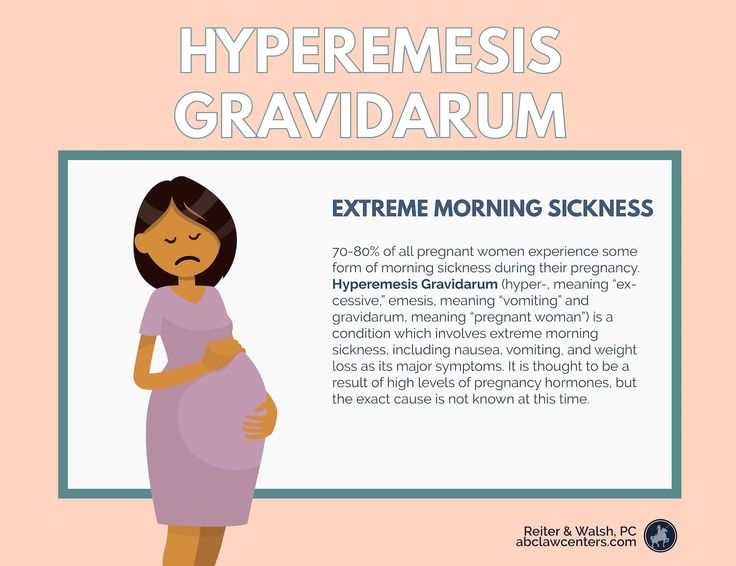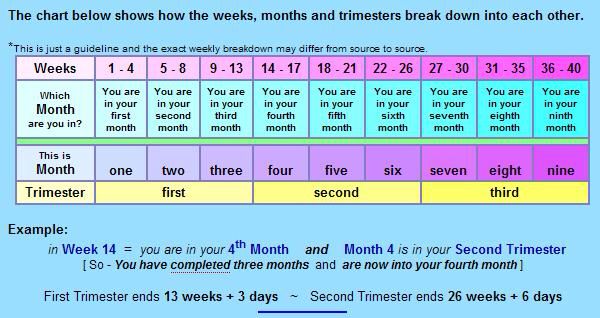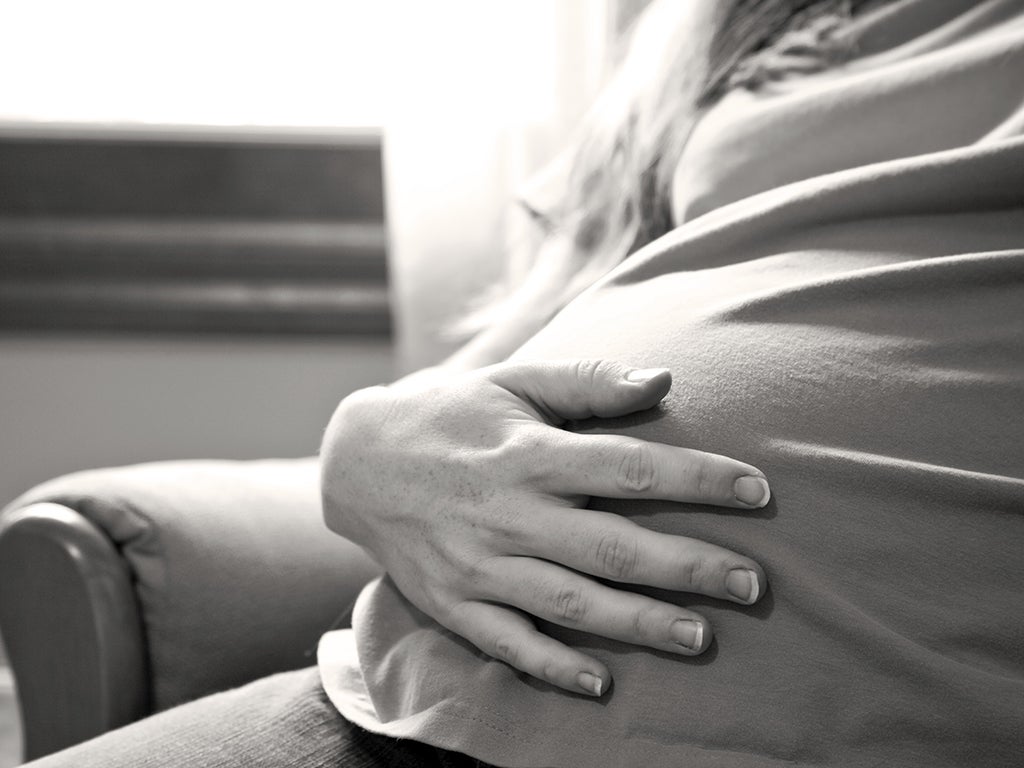Hands swollen in morning pregnancy
Swollen ankles, feet and fingers in pregnancy
Swelling in your ankles, legs, feet and fingers is common during pregnancy.
Causes of swelling
As your womb grows, it can put pressure on the circulation to the lower part of your body. This means that blood doesn't flow as well as usual, which can cause fluid to build up in your lower limbs.
During pregnancy your body also holds more fluid than usual. This extra fluid can collect in your legs and ankles, which can cause swelling.
It can also sometimes collect in your hands and fingers. This can cause them to swell. It may mean that you can no longer comfortably wear jewellery like rings.
When to get medical help
Swelling that happens gradually can be uncomfortable, but it's not harmful to you or your baby.
Swelling that happens suddenly or with other symptoms could be a sign of pre-eclampsia. This can cause problems for pregnant women and babies if it's not diagnosed and treated.
Always see your GP if you suddenly become swollen or have other symptoms.
High blood pressure in pregnancy and pre-eclampsia
Urgent advice: Contact your GP immediately if you have:
- sudden swelling of your face, hands or feet
- blurred vision or flashing lights before your eyes
- a severe headache
- severe pain just below your ribs
- vomiting after 24 weeks of pregnancy
Swelling in pregnancy usually affects both of your legs, ankles or feet.
Urgent advice: Always see your GP if you have:
- one leg that is swollen
- one calf that is red, hot or tender
These could be signs of a deep vein thrombosis, or DVT (blood clot).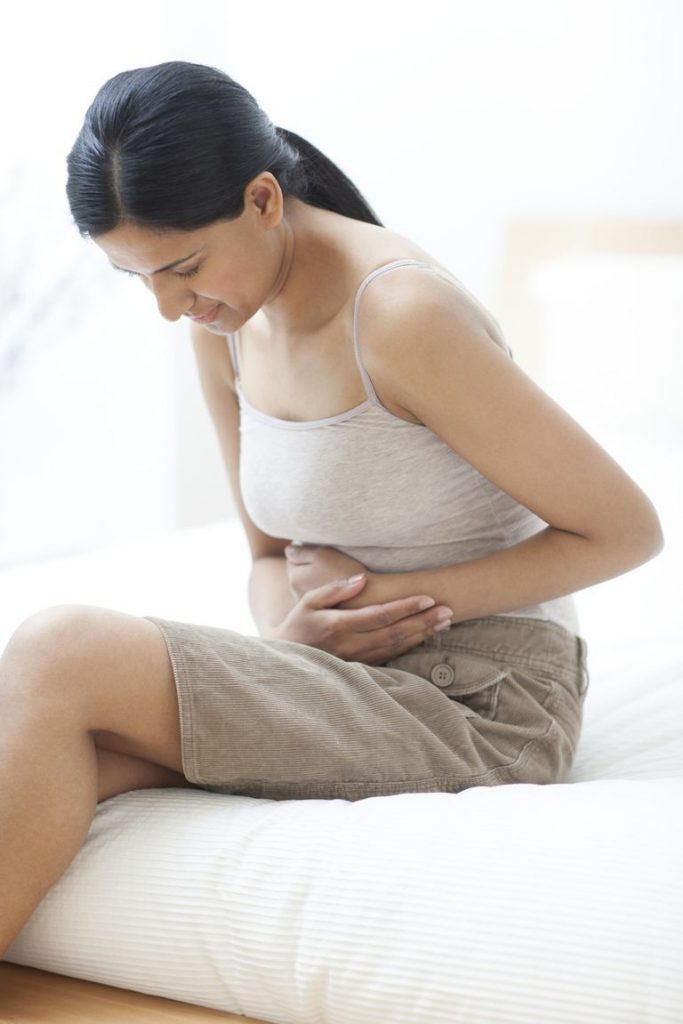
How to reduce swelling
If you have gradual swelling and no other symptoms, there are things you can do that might help.
These include drinking plenty of water and being as active as possible. Exercise during pregnancy helps your circulation.
Swelling in your hands and fingers
There are various things you can do to reduce gradual swelling in your hands and fingers.
Use cold compresses on your hands and fingers if they are swollen. For example, wet a flannel or face cloth with cold water and hold it around the swollen part.
Try not to wear anything that is too tight on your arms or wrists. For example, tight watches or bracelets.
If you notice that your rings are becoming tight, it's probably a good idea to take them off.
Tell your GP, midwife or obstetrician if you have any pain or tingling in your wrists or fingers.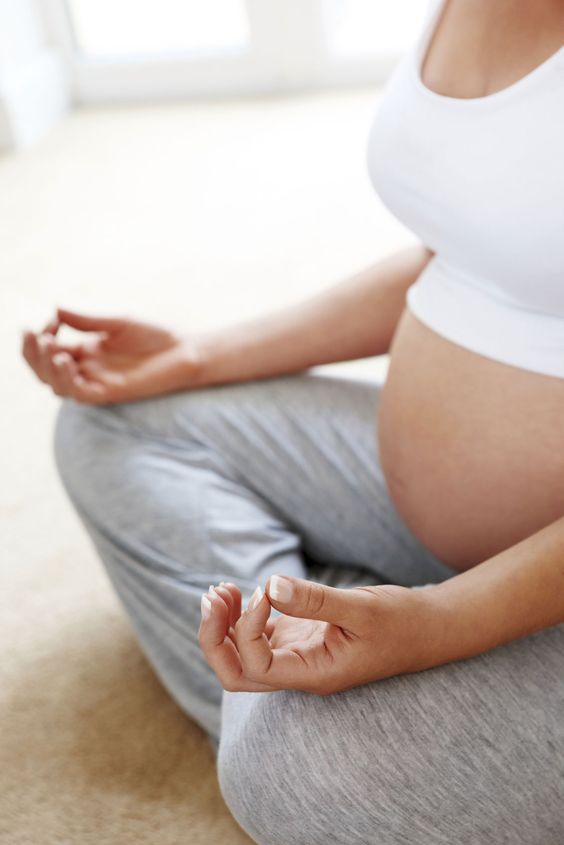 This could be a sign of carpal tunnel syndrome.
This could be a sign of carpal tunnel syndrome.
Swelling in your legs, ankles and feet
To treat gradual swelling in your legs, ankles and feet, you should:
- avoid standing for long periods of time
- put your feet up when you can
- not cross your legs
- wear comfortable shoes
- drink plenty of water
- stay as active as possible
Foot exercises can help reduce ankle and foot swelling, and reduce leg cramps.
- Bend and stretch your foot up and down 30 times.
- Rotate your foot 8 times in one direction and 8 times in the other direction.

Page last reviewed: 17 May 2019
Next review due: 17 May 2022
Swollen ankles, feet and fingers in pregnancy
It's normal to get some swelling in pregnancy, particularly in your legs, ankles, feet and fingers.
It's often worse at the end of the day and further into your pregnancy.
Swelling that comes on gradually is not usually harmful to you or your baby, but it can be uncomfortable.
A sudden increase in swelling can be a sign of pre-eclampsia, a condition that needs to be monitored as soon as possible.
Non-urgent advice: Call your midwife, GP or labour ward immediately if you have:
- a sudden increase in swelling in your face, hands or feet
- a very bad headache
- problems with your vision, such as blurring or flashing lights in your eyes
- severe pain just below your ribs
- vomiting with any of these symptoms
These could be symptoms of pre-eclampsia, which can lead to serious complications if it's not monitored and treated.
Normal pregnancy swelling
Swelling is caused by your body holding more water than usual when you're pregnant.
Throughout the day the extra water tends to gather in the lowest parts of the body, especially if the weather is hot or you have been standing a lot.
The pressure of your growing womb can also affect the blood flow in your legs. This can cause fluid to build up in your legs, ankles and feet.
What can help to reduce swelling
Try to:
- avoid standing for long periods
- wear comfortable shoes and socks – avoid tight straps or anything that might pinch if your feet swell
- try to rest with your feet up as much as you can
- drink plenty of water – this helps your body get rid of excess water
- exercise – try to take regular walks during the day or doing foot exercises
Foot exercises
You can do foot exercises sitting or standing.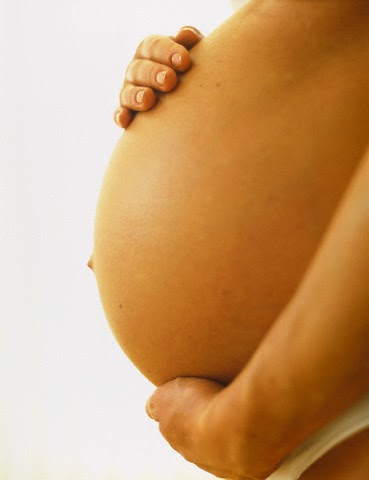 They improve blood circulation, reduce swelling in the ankles, and prevent cramp in the calf muscles:
They improve blood circulation, reduce swelling in the ankles, and prevent cramp in the calf muscles:
- bend and stretch your foot up and down 30 times
- rotate each foot in a circle 8 times one way and 8 times the other way
Get more tips on exercising in pregnancy.
Page last reviewed: 10 March 2021
Next review due: 10 March 2024
Edema during pregnancy | Nutriclub
What you need to know about edema: why they appear, how to deal with them, how to distinguish ordinary physiological edema from a symptom of a serious illness
It is believed that edema inevitably accompanies the pregnancy of most women - you just need to endure their unaesthetic appearance. However, swelling can be a signal of health problems and pose a danger to both the expectant mother and the development of the fetus. Nutriclub understands when to worry if you have swelling.
- Edema - excessive accumulation of fluid in the interstitial space - occurs quite often in pregnant women. Swelling can occur at any time and in different parts of the body.
- Edema on the face (especially bags under the eyes and severe swelling of the eyelids) are especially noticeable and cause maximum dissatisfaction, because they directly affect the appearance.
- Very often, pregnant women have swollen legs, especially after a long walk. That is why it is so important to get comfortable shoes for the entire period of pregnancy.
- Hands tend to swell in women who work at a computer or do needlework. Rings begin to press, fingers look like “sausages”. In such cases, you need to temporarily abandon jewelry.
- Pregnant women often mistake swelling of the nasal mucosa for a runny nose or allergies. The latter is more likely because allergic reactions tend to get worse during pregnancy. Also in pregnant women, due to changes in hormonal levels, a condition called rhinitis of pregnancy can develop, which is accompanied by severe nasal congestion.
 It is better to take tests and be sure to discuss the situation with a doctor who will prescribe a drug that is allowed during pregnancy. Ignoring nasal congestion is not recommended - breathing problems in the mother can make it difficult for oxygen to reach the child.
It is better to take tests and be sure to discuss the situation with a doctor who will prescribe a drug that is allowed during pregnancy. Ignoring nasal congestion is not recommended - breathing problems in the mother can make it difficult for oxygen to reach the child.
All these edemas can be both physiological and pathological.
Physiological edema of pregnant women
Physiological usually do not cause complications. They are explained by natural changes in the body of the expectant mother: the uterus puts pressure on neighboring organs, slowing down blood circulation, and sodium accumulates in the blood - it slows down the excretion of fluid from the body. At the same time, during pregnancy, the total amount of fluid circulating throughout the body almost doubles (part of it is contained in the amniotic fluid and placenta).
At the same time, a woman's hormonal background changes, which may be the cause of the legendary “salty” craving, which, in turn, provokes thirst and excessive fluid intake.
Summer heat or stuffiness in transport and premises, physical overload also affects health and appearance.
Physiological edema is considered natural at any stage of pregnancy - and does not pose a threat to the woman's health.
But at the first sign of swelling, you should definitely contact your obstetrician-gynecologist. The doctor will prescribe the necessary examinations and tests to exclude pathological edema, indicating health problems and complications of pregnancy.
Pathological edema during pregnancy
Pathological edema in the early stages may signal hypothyroidism - a condition in which there is a lack of thyroid hormones in the body. Doctors try to identify the disease before the appearance of swelling - pregnant women with a deficiency or excess body weight, with severe toxicosis, a blood test for thyroid hormones is prescribed. If the results are not normal, treatment is prescribed.
Also, starting from the first trimester, edema may appear due to problems with the kidneys.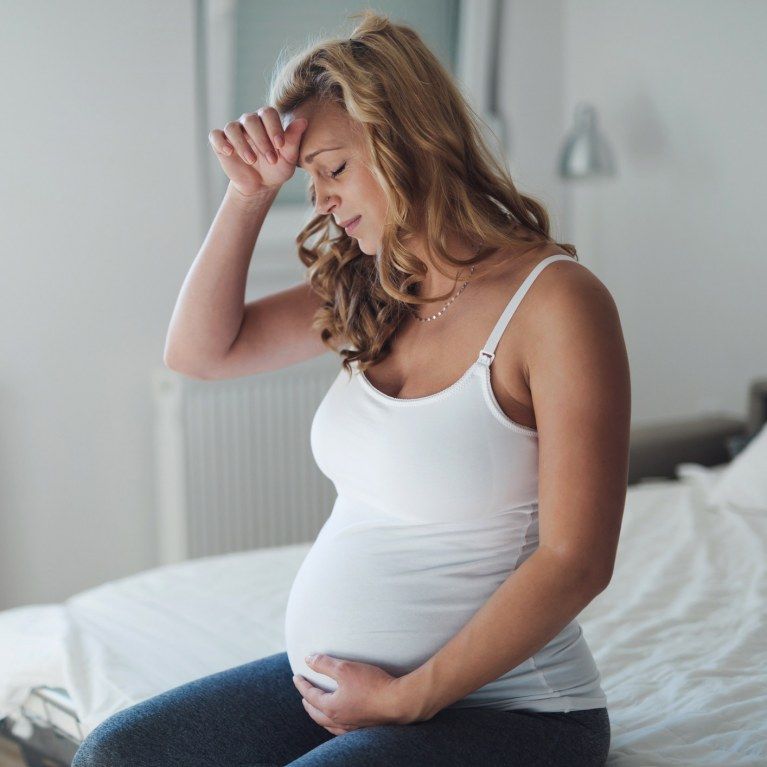 It is very important to take a urine test every two weeks, as recommended in the antenatal clinic. Erythrocytes, high leukocytes, a protein that should not be in the urine - a reason for referral to a urologist and ultrasound of the kidneys. It is important to exclude an infection in the kidneys, and if it is diagnosed, it should be treated qualitatively. Otherwise, premature obstructed labor or the birth of a child with a low weight are possible.
It is very important to take a urine test every two weeks, as recommended in the antenatal clinic. Erythrocytes, high leukocytes, a protein that should not be in the urine - a reason for referral to a urologist and ultrasound of the kidneys. It is important to exclude an infection in the kidneys, and if it is diagnosed, it should be treated qualitatively. Otherwise, premature obstructed labor or the birth of a child with a low weight are possible.
Starting from the 20th week, swelling may indicate varicose veins. Circulatory disturbance due to uterine pressure leads to the formation of "knots" and pain in the legs. If you suspect varicose veins, you will be referred to a phlebologist who will give the necessary recommendations.
Edema also accompanies heart failure, which is considered a serious complication of pregnancy. In this case, the appearance of edema is preceded by shortness of breath and cyanosis of the mucous membranes.
However, most often, pathological swelling indicates late toxicosis - gestosis.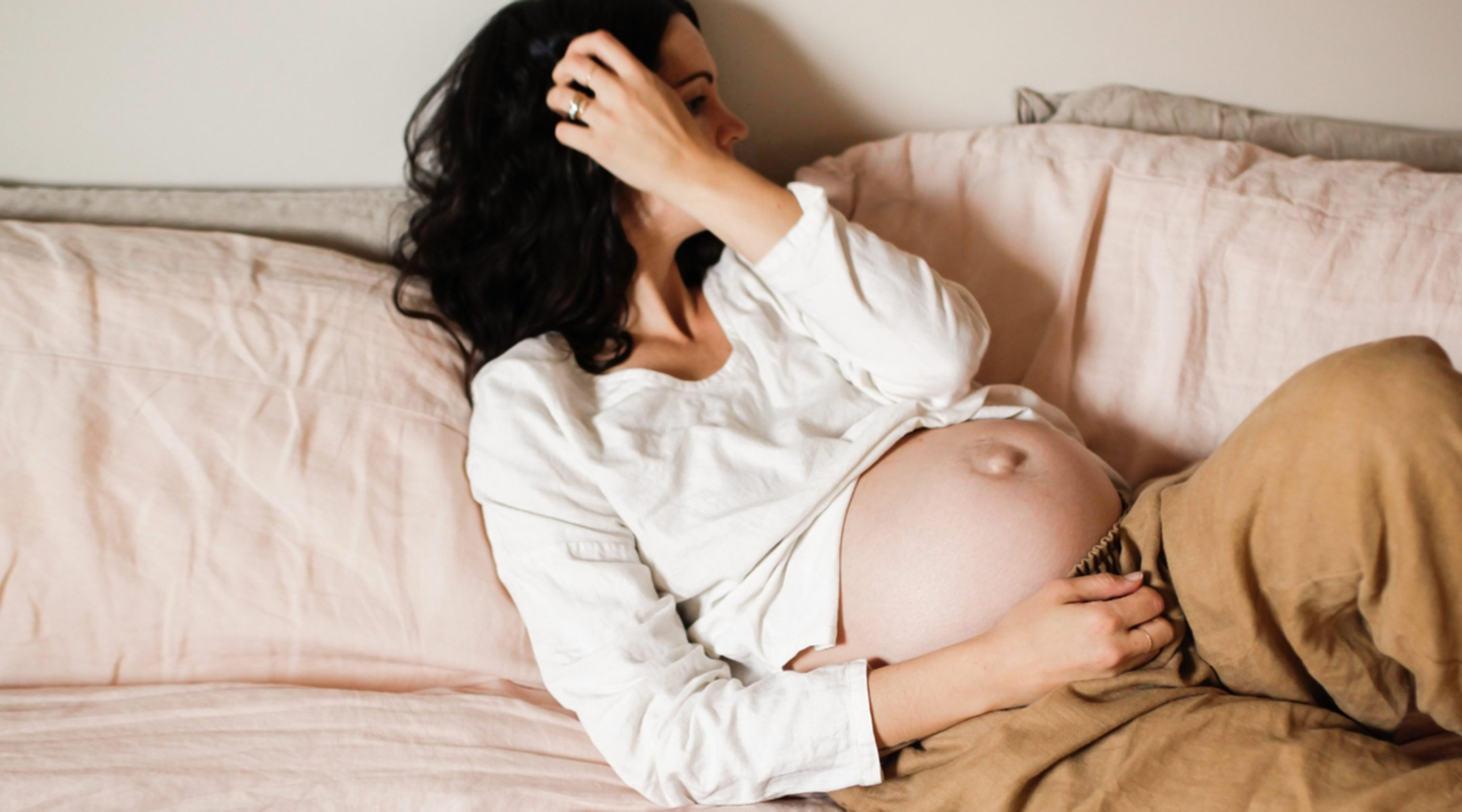 This is a problem in the third trimester of pregnancy, but the first signs can begin to appear between the 18th and 20th weeks. Preeclampsia almost always requires the help of a doctor and the presence of a pregnant woman in a hospital.
This is a problem in the third trimester of pregnancy, but the first signs can begin to appear between the 18th and 20th weeks. Preeclampsia almost always requires the help of a doctor and the presence of a pregnant woman in a hospital.
What is gestosis and why is it dangerous?
However, gestosis, in addition to edema, has other symptoms: high blood pressure, protein in the sea (it is normally absent), nausea, vomiting, headaches, convulsions, fever, drowsiness, or, conversely, severe arousal.
There are four degrees of preeclampsia. The first degree is known as dropsy of pregnant women, it is mainly expressed in edema. The second degree is edema, protein in the urine, a violation of pressure. The third degree of preeclampsia is called preeclampsia. It is characterized by a decrease in cerebral circulation and even hemorrhage. In the most severe, fourth stage of the disease, convulsions (eclampsia) are observed. A pregnant woman may have a stroke or placental abruption.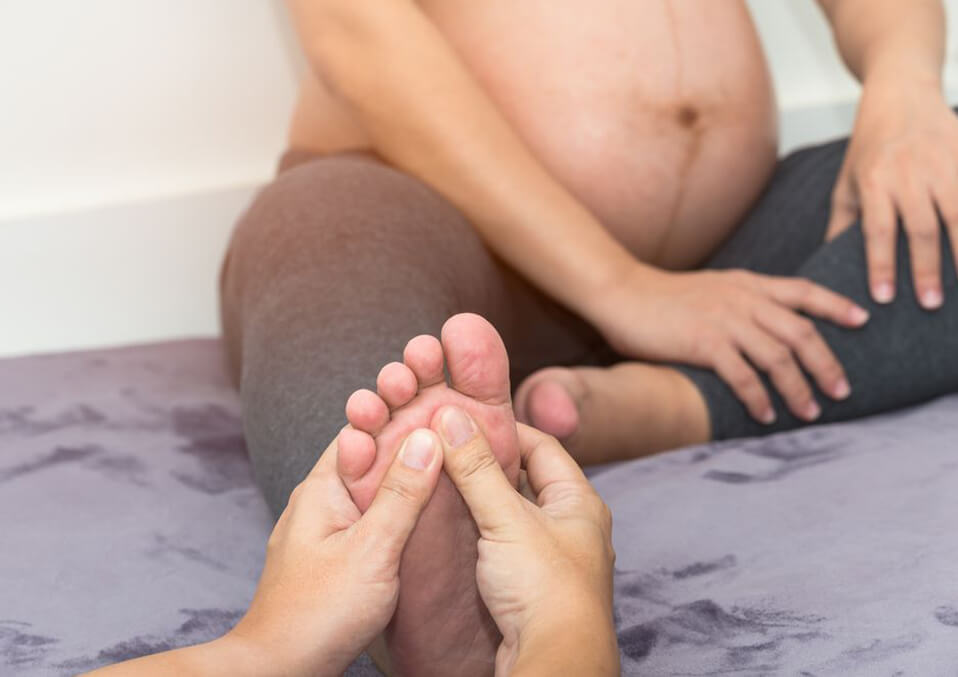
Thus, even if everyone around them says that edema is completely natural, and they do not cause discomfort to the pregnant woman herself, it is very important to inform the doctor about the first appearance of swelling - precisely in order to make sure that the edema is physiological, and not pathological, and no complications for the development of the fetus and the process of childbirth will not entail.
When should a pregnant woman see a doctor immediately?
The following problems can be considered the reason for an urgent visit to a doctor:
- swelling visible already in the morning, immediately after getting up;
- edema accompanied by high blood pressure;
- edema becomes very severe: it is impossible to clench the hand into a fist, shoes are painful and uncomfortable to wear, it is difficult to open the eyes due to swelling;
- regular shortness of breath, palpitations;
- headaches do not go away for several days;
- regularly experience nausea and vomiting after the 12th week;
- Urges for small needs are rare and are accompanied by the release of urine of a dark color;
- there are pains in the upper part of the abdomen;
- painful convulsions appear;
What helps with swelling during pregnancy?
If, according to the results of examination and analysis, it is established that the edema is physiological, it is possible to get rid of them (or at least reduce them) using the following methods.
- Avoid fried, smoked, spicy, pickled and sweet foods. Steam or bake, eat fruits and vegetables regularly.
- The use of salt should be limited - it contains sodium, it is he who retains fluid in the body.
- Many advise to limit the use of water, even in the form of broth. In fact, it threatens with dehydration. It is better to drink plain water in small sips - and consume most of the daily allowance of one and a half to two liters in the morning. Soda should be excluded.
- It is contraindicated to stay in heat or stuffy rooms for a long time.
- On the recommendation of a doctor, you can wear special compression underwear, while giving up tight tights, uncomfortable shoes and heels.
- Sleep at least 8-10 hours. It is also recommended to lie down every day for 15-20 minutes with legs raised up, do foot massage and foot baths with sea salt.
When using any materials from the site nutriclub.ru, a link to the site is required.
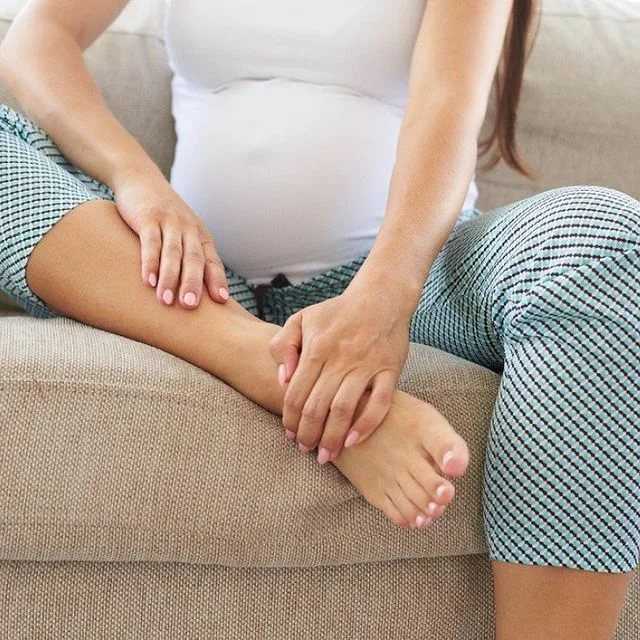
© Nutriclub, 2020
You will also be interested
- Nutriclub - healthy nutrition and child development
- Pregnancy
- Mom's health and well-being
- Edema during pregnancy | Nutriclub
reasons, what to do, how to reduce
PreviousNext
- Is swelling during pregnancy normal?
- Where can edema appear?
- How to detect edema?
- Are swelling during pregnancy dangerous?
- How to reduce swelling during pregnancy?
- If swelling disappears during pregnancy, is it good?
Contents:
Pregnancy is a happy time in anticipation of a miracle, but even it has a few "fly in the ointment" that few people manage to avoid. Perhaps the most famous of them are toxicosis, digestive problems, back pain and, of course, swelling. Why do pregnant women swell? By what signs can you understand that it is time to start treatment? What can be done to prevent or reduce swelling? Let's discuss the causes and consequences.
Perhaps the most famous of them are toxicosis, digestive problems, back pain and, of course, swelling. Why do pregnant women swell? By what signs can you understand that it is time to start treatment? What can be done to prevent or reduce swelling? Let's discuss the causes and consequences.
Is swelling during pregnancy normal?
More likely yes than no. The key causes of edema during pregnancy are an increase in fluid in the woman's body and a high level of progesterone 1 . This hormone begins to be actively produced even during ovulation, preparing the uterus for egg implantation. Its concentration remains consistently high in a woman's blood throughout pregnancy, providing many important functions associated with fetal development. Unfortunately, it has such a side effect.
Interesting fact
Many women experience swelling before menstruation 2 . It's also progesterone. The hormone level rises in the second half of the menstrual cycle, which leads to this result.
The fact that one of the causes of edema during pregnancy is the production of a very important hormone does not mean at all that you need to accept this situation with humility. It all depends on the severity of the condition: slight swelling in pregnant women is almost inevitable, but if they become significant, it is worth thinking about treatment.
What other changes appear in the body during pregnancy, read here.
Where can edema appear?
Edema during pregnancy is most often localized on the feet, ankles and lower legs. The reasons are clear: excess liquid first collects at the very bottom - where gravity pulls it. Usually everything starts with pastosity - mild swelling with blanching and a decrease in skin elasticity.
The next favorite place for pastosity and swelling is the hands. Also, excess fluid often leaves a mark on the face, along with edema, nasal debt may appear - the so-called "pregnant rhinitis" 3 .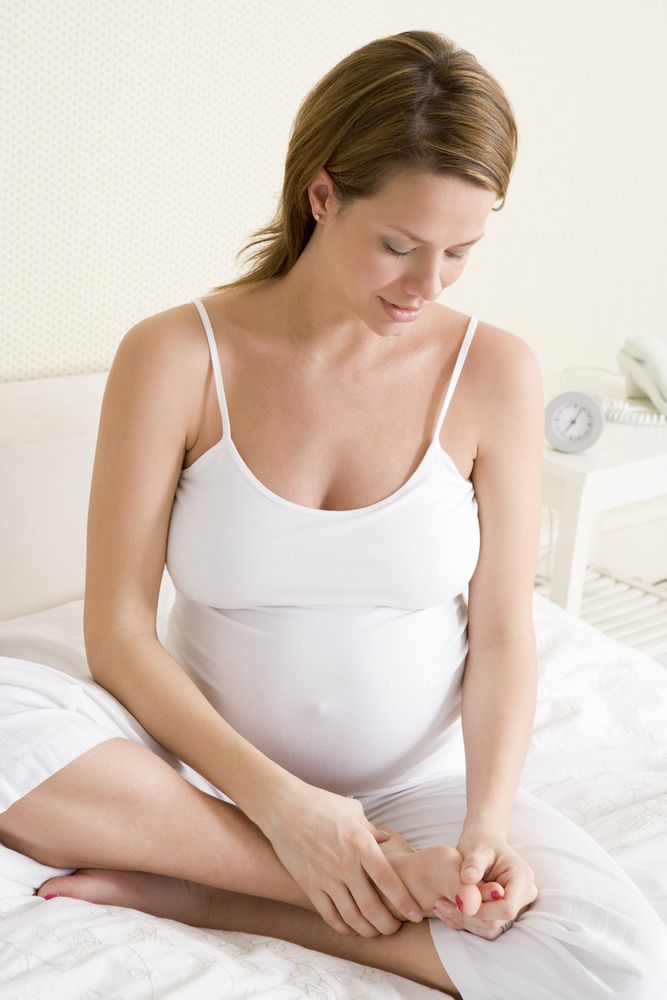
Important to know!
Most people consider cold drops and sprays to be among the most harmless medicines. Just not during pregnancy - many of them are dangerous for the fetus 4 ! Be sure to consult your doctor before treating a runny nose.
And even in the early stages of pregnancy, a woman's body temperature rises to a more comfortable fetus - just above 37 ° C. This does not mean at all that you have caught a cold or caught a virus. To learn more about basal temperature, read our article.
How to detect swelling?
Severe swelling during pregnancy is hard not to notice. When puffiness is not so pronounced, especially if the accumulation of excess fluid occurs slowly, the following signs will help to detect them:
-
There is a suspicious weight trend. If you follow the diet recommended by your doctor, but the weekly weight gain exceeds the norm for this period of pregnancy, most likely water is retained somewhere in the body.

-
Rings get stuck on the fingers, tight shoes. Signs of pastosity during pregnancy are easiest to detect by things picked up by hand or leg - they begin to press. By the way, it is better to remove the rings while there is such an opportunity.
-
The face is rounded. Every day you see your face in the mirror and you will surely notice if its forms begin to blur, smooth out.
-
There are traces of rubber bands. Many women today wear "footprints" - short socks that are almost invisible from the shoes. Perhaps the high "classic" is not so elegant, but it is an excellent tool for the early diagnosis of edema during pregnancy. If their elastic bands leave embossed marks on the legs, it means that excess fluid is collecting in the tissues.
-
There are unusual sensations in the fingers. If you feel tingling, burning, or numbness in your fingers, if there is pain or tension when you bend your fingers or step on your toes, it is most likely a sign of swelling.
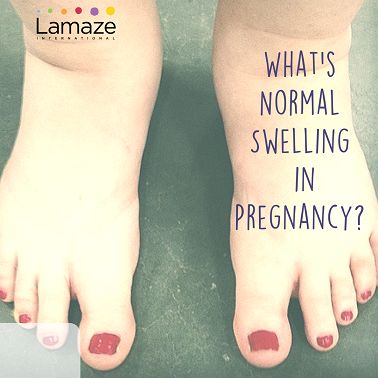
Is swelling during pregnancy dangerous?
Edema is an excess accumulation of fluid in tissues 5 . As you can see, in this definition there is no clarification “in the tissues located directly under the skin”, internal organs can also swell. Often, swelling of the arms, legs, face in pregnant women is just the tip of the iceberg. Hidden from the eyes, internal stagnation of water can cause dysfunction of organs, general dehydration, and impaired oxygen transport. Ultimately, this can threaten the fetus with an insufficient supply of nutrients and oxygen starvation. Severe swelling during pregnancy affects not only the beauty of the expectant mother, but also the health of her baby.
Medicine divides edema during pregnancy into physiological and pathological. The former refers to almost inevitable changes associated with a hormonal shift and a general increase in fluid circulating in the body. The latter are a sign of various internal problems, such as kidney disease, heart failure, varicose veins, preeclampsia (late toxicosis) and others. Physiological edema usually does not require treatment - to reduce them, it is enough to follow a healthy lifestyle. In pathological cases, it is necessary to find the cause and eliminate it.
Physiological edema usually does not require treatment - to reduce them, it is enough to follow a healthy lifestyle. In pathological cases, it is necessary to find the cause and eliminate it.
Your doctor will be able to distinguish physiological from pathological edema based on the results of the examination and tests. In particular, the presence of protein in the urine is an alarming sign. Between visits to the doctor, you yourself can suspect a pathology if the edema grows too quickly, starts to rise above the shins, and when you press on the swollen places, dents remain on the skin, which slowly resolve.
What else can go wrong while carrying a baby? Watch a video lesson on the pathologies of pregnancy from the fertility specialist Anna Ilyina.
How to reduce swelling during pregnancy?
Pharmaceutical treatment is the last resort and is used only in extreme cases. Usually it is enough to adjust the lifestyle and acquire a few good habits.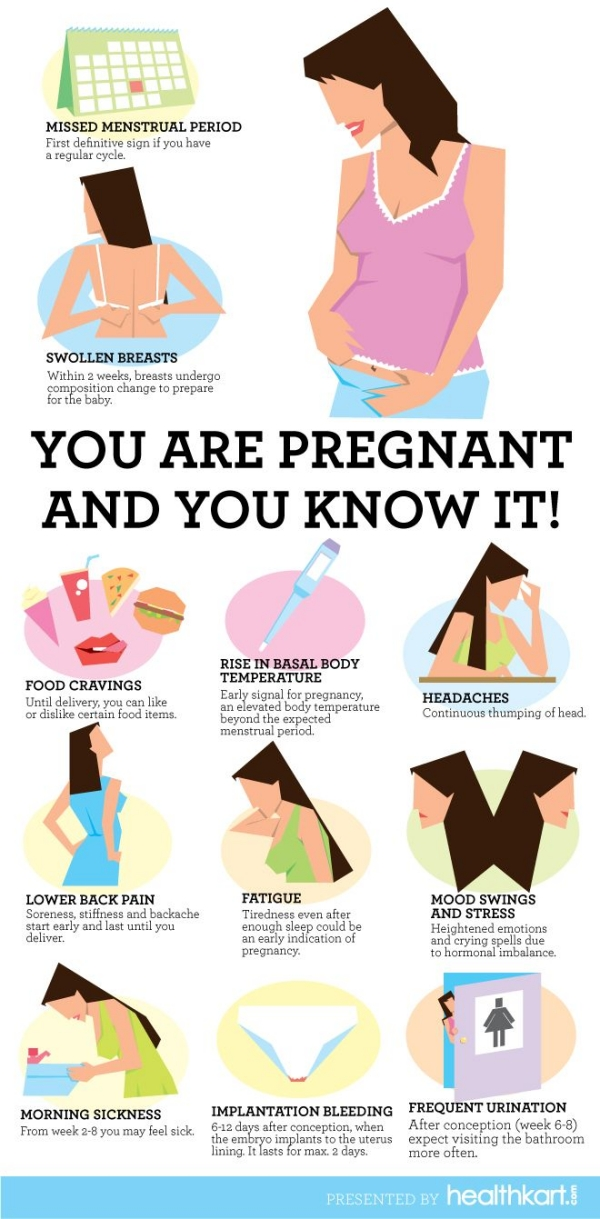 We'll give you 12 simple tips to help reduce water retention 1 .
We'll give you 12 simple tips to help reduce water retention 1 .
-
Observe the regime of the day. Try not to overwork during the day and have a good rest. The duration of sleep during pregnancy should be at least 8 hours, and if your body has such a need, even 9-10 hours.
-
Walk more. Your assistants in the treatment of edema during pregnancy are fresh air and reasonable physical activity. If in ordinary life you are used to walking only from the elevator to the parked car and back, something needs to be done about it.
-
Wear comfortable shoes. Even if you really love high-heeled shoes, even if you have complexes without them because of your own height, you will have to give them up for a while. Uncomfortable shoes exacerbate swelling during pregnancy, and soft shoes with low heels help fight it. If your feet still hurt at the end of the day, visit an orthopedic salon and ask a specialist to make custom insoles for you.
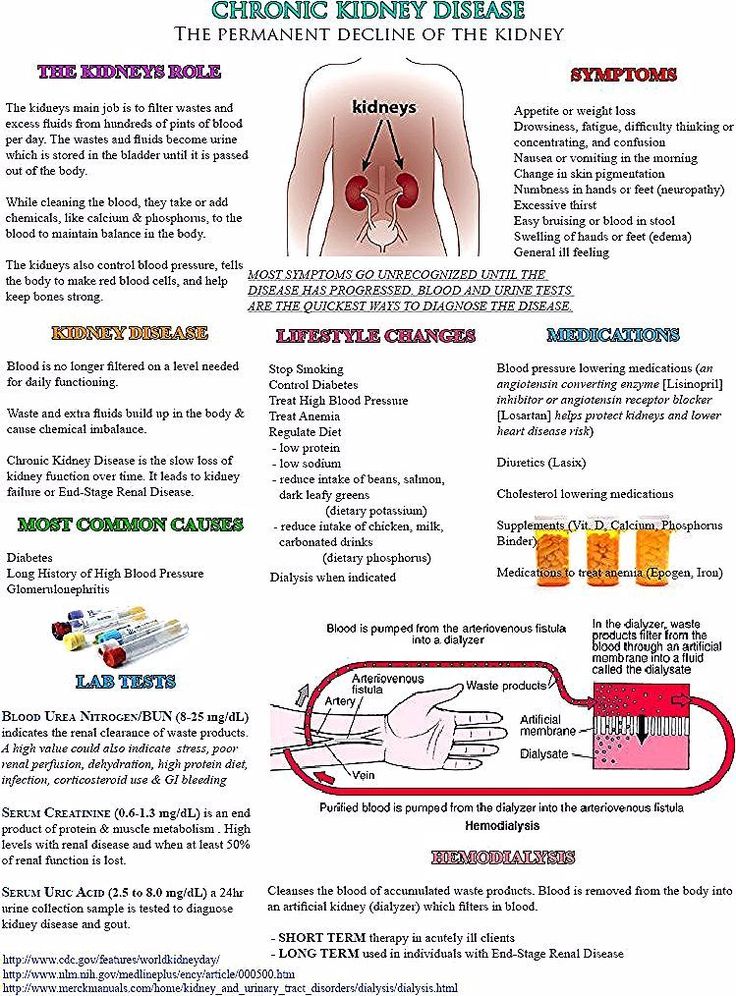
-
Change your posture more often. When your body becomes numb, it swells. Try not to sit or stand without moving for a long time. Both at work and at home, periodically leave your favorite chair to stretch a little. And while you are sitting in it, do not freeze in one position - move your arms and legs, change the position of your body.
-
Let's rest our feet. To prevent swelling in the legs, it is necessary to periodically raise them higher. So you facilitate the work of the circulatory system and allow it to pump out a little excess fluid from the legs. It is ideal to lie on your back with your legs up, but even if you just put them on a nearby chair during lunch in a corporate kitchen, this is not bad.
-
Exercise. In the fight against puffiness during pregnancy, simple physical exercises are useful - tilts, turns, etc. Statics will also help: kneel, then lower yourself on your elbows, stand in this position for 5 minutes.
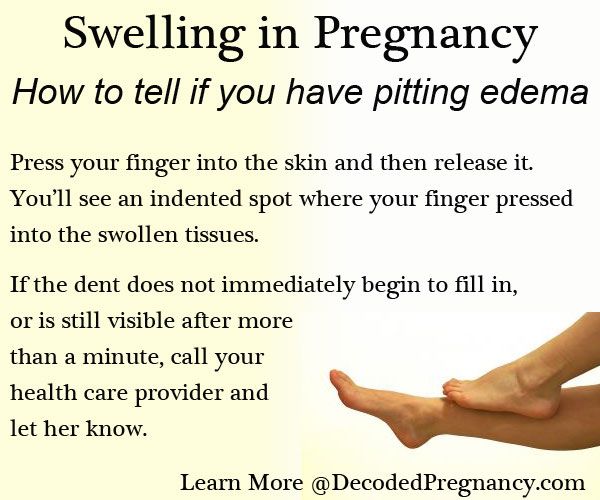 Yoga classes for pregnant women also allow you to disperse the fluid.
Yoga classes for pregnant women also allow you to disperse the fluid. -
Lie on your side. In late pregnancy, your body itself will tell you the correct position for rest - lying on your side. In the early stages, it is also the most useful: in this position, the kidneys work most efficiently, utilizing excess water.
-
Drink, and do not limit yourself in this. You might think: the less I drink, the less swelling there will be. No, you can't drive them away like that, but getting dehydrated is easy. Drink as much as you want, but only clean water, fruit drinks or decoctions without sugar. Soda, juices from the store and other sugary drinks should be excluded from the diet.
-
Observe nutritional balance. During pregnancy, eat more protein foods, avoid pastries, bread, sweets and other carbohydrate-rich foods, limit the amount of fat in the diet. Completely give up "empty calories" - snacks and fast food.
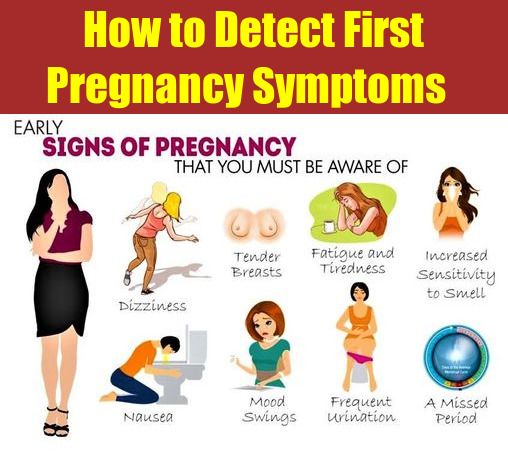
-
Arrange fasting days. Treat yourself with a diet once a week. It's not about sitting on the water all day. There are many recipes for a tasty and quite nutritious "unloading" - from a kefir or banana diet to a chicken breast day or fruit smoothies.
-
Control your sodium intake. Sodium salts hold fluid in tissues, and the most famous of them is ordinary table salt. To prevent severe swelling during pregnancy, limit your daily salt intake to one level teaspoon, even less is better. When calculating, do not forget that salt enters the body not only from the salt shaker. It is found in many food ingredients (meat, fish, dairy products, tomatoes, etc.), and in almost all semi-finished and finished products - from sausage to bread. Over time, you may even come to love the natural taste of food without or with minimal salt added - it is quite good.
-
Take natural diuretics. Rosehip, hawthorn, chamomile, lingonberry, bearberry - in the pharmacy you can find a lot of natural remedies to combat edema.
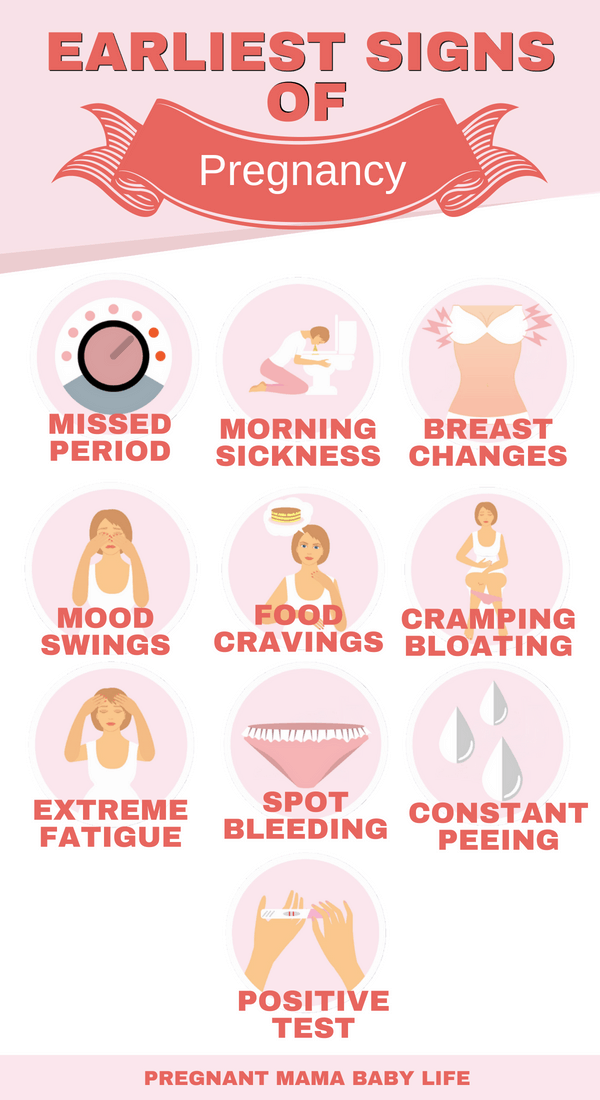 Discuss the purchase with your doctor: during pregnancy, you should consult with him before taking any medications, even herbal ones.
Discuss the purchase with your doctor: during pregnancy, you should consult with him before taking any medications, even herbal ones.
Compression stockings 6 can be worn to prevent swelling and varicose veins. Consult your doctor - he will tell you what is better to buy and how to use.
If swelling disappears during pregnancy, is it good?
If you've recently changed your diet, are spending more time outdoors, or are taking other activities, that's very good. So your treatments are working and you are on the right track.
Another thing is when edema during pregnancy disappears by itself, without any changes in your life. A few days before the planned date of delivery, this is normal: progesterone has done its job, and its level drops 7 , releasing excess water. If the birth is still far away, a spontaneous decrease in edema is at least a suspicious sign. Contact your doctor to establish the cause of the body's unexpected gift and decide what to do about it.